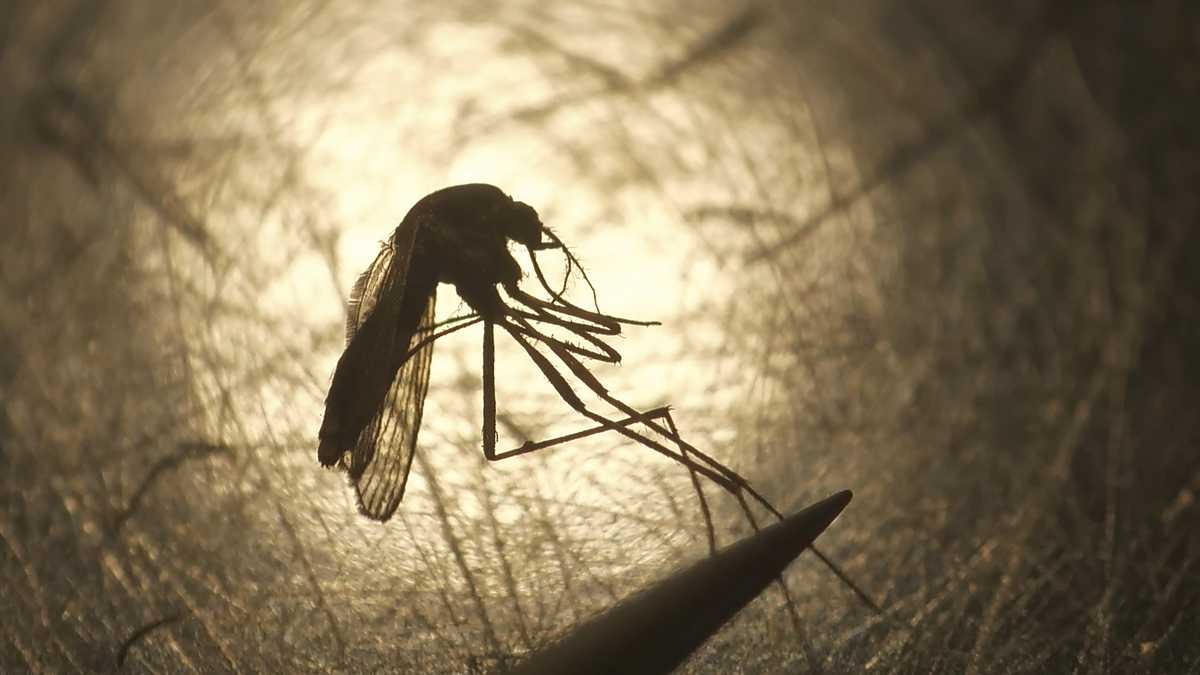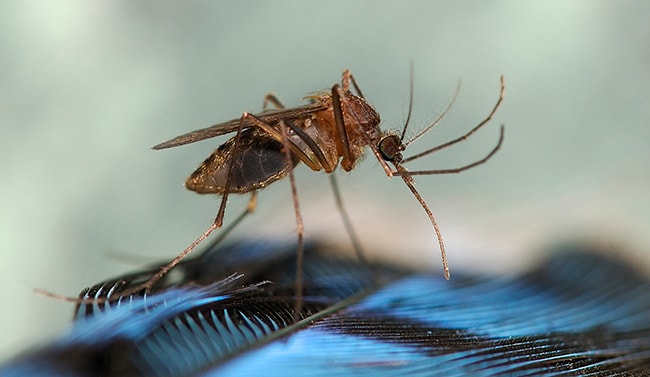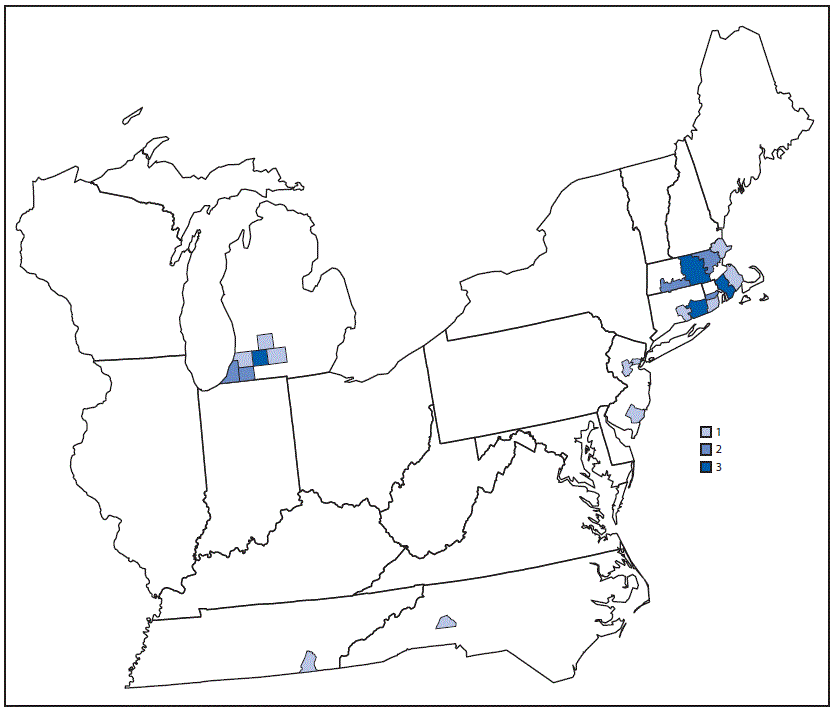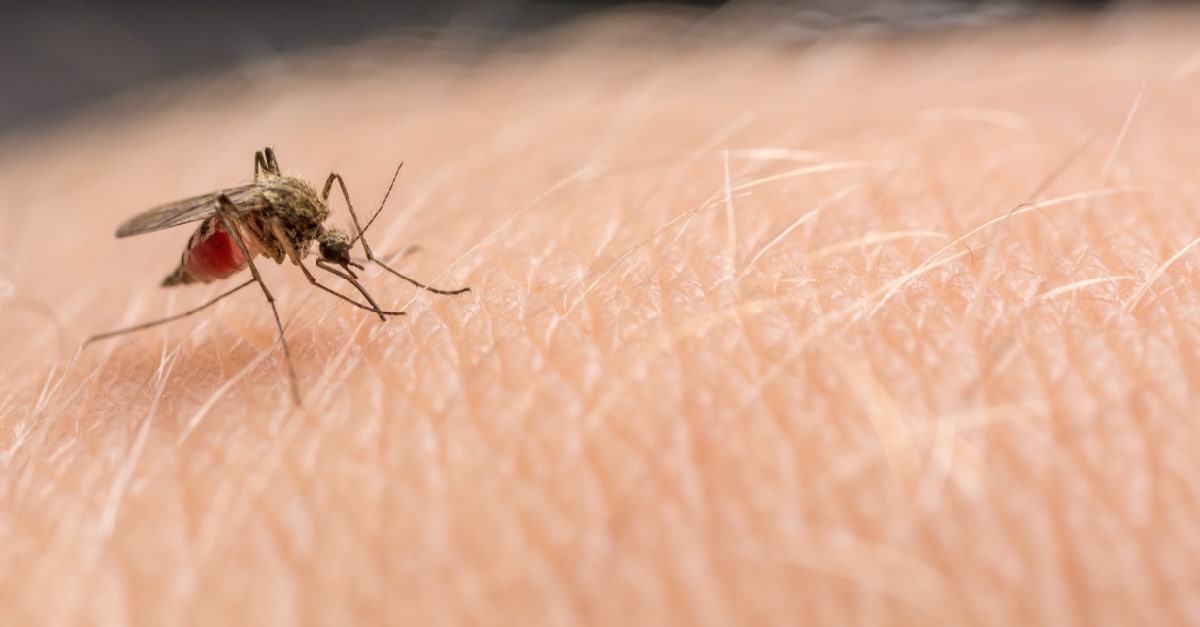BRAIN BUG Brain-swelling mosquito EEE virus kills two more bringing US death toll to nine ? as people are told to stay inside
Gemma MullinLucy Jones
24 Sep 2019, 9:25Updated: 24 Sep 2019, 9:48
Health officials confirmed James Longworth, 78, from Massachusetts, and Patricia Shaw, 77, from Connecticut both passed away after contracting the viral infection.
And US experts are now warning residents not to go out after dusk as cases of Eastern equine encephalitis reach unprecedented levels.
Patricia was the first person to die of EEE in Connecticut and the second case overall in the state this year.
...
State health officials confirm 3rd Massachusetts resident has died of EEE
WCVBUpdated: 5:21 AM EDT Sep 24, 2019
BOSTON ?
A third person has died of Eastern equine encephalitis in Massachusetts this year, according to state health officials.
The Massachusetts Department of Public Health told WCVB that is has received reports about three fatalities among the 10 confirmed human cases of EEE this year.
No information was immediately available about the latest victim. A Freetown man in his 70s died of the virus last week, and a Fairhaven woman in her 50s died last month.
...
At least 6 people have died in the United States from a rare mosquito-borne illness
Ben Tinker-Profile-ImageHollie Silverman
By Ben Tinker and Hollie Silverman, CNN
Updated 3:54 AM ET, Tue September 24, 2019
...
Earlier this month, the Rhode Island Department of Health announced the death of an adult in their 50s from West Warwick. It was the state's first human case since 2010 and the first fatal case since 2007, a news release said.
The east coast isn't the only area with concerns about the mosquito-borne illness.
A person in Kalamazoo County, Michigan, died from EEE in early September, a news release from Kalamazoo County Health and Community Services said.
...
State health officials urge cancellation of outdoor events, 3 Michiganders die from rare virus
Kristen Jordan Shamus, Detroit Free PressPublished 5:35 p.m. ET Sept. 17, 2019 | Updated 6:53 p.m. ET Sept. 18, 2019
...
The three people who died were all adults, and lived in Kalamazoo, Cass and Van Buren counties, said Bob Wheaton, a spokesman for the Michigan Department of Health and Human Services. The four other confirmed cases are in Kalamazoo, Berrien, and Barry counties.
...
Gemma MullinLucy Jones
24 Sep 2019, 9:25Updated: 24 Sep 2019, 9:48
Health officials confirmed James Longworth, 78, from Massachusetts, and Patricia Shaw, 77, from Connecticut both passed away after contracting the viral infection.
And US experts are now warning residents not to go out after dusk as cases of Eastern equine encephalitis reach unprecedented levels.
Patricia was the first person to die of EEE in Connecticut and the second case overall in the state this year.
...
State health officials confirm 3rd Massachusetts resident has died of EEE
WCVBUpdated: 5:21 AM EDT Sep 24, 2019
BOSTON ?
A third person has died of Eastern equine encephalitis in Massachusetts this year, according to state health officials.
The Massachusetts Department of Public Health told WCVB that is has received reports about three fatalities among the 10 confirmed human cases of EEE this year.
No information was immediately available about the latest victim. A Freetown man in his 70s died of the virus last week, and a Fairhaven woman in her 50s died last month.
...
At least 6 people have died in the United States from a rare mosquito-borne illness
Ben Tinker-Profile-ImageHollie Silverman
By Ben Tinker and Hollie Silverman, CNN
Updated 3:54 AM ET, Tue September 24, 2019
...
Earlier this month, the Rhode Island Department of Health announced the death of an adult in their 50s from West Warwick. It was the state's first human case since 2010 and the first fatal case since 2007, a news release said.
The east coast isn't the only area with concerns about the mosquito-borne illness.
A person in Kalamazoo County, Michigan, died from EEE in early September, a news release from Kalamazoo County Health and Community Services said.
...
State health officials urge cancellation of outdoor events, 3 Michiganders die from rare virus
Kristen Jordan Shamus, Detroit Free PressPublished 5:35 p.m. ET Sept. 17, 2019 | Updated 6:53 p.m. ET Sept. 18, 2019
...
The three people who died were all adults, and lived in Kalamazoo, Cass and Van Buren counties, said Bob Wheaton, a spokesman for the Michigan Department of Health and Human Services. The four other confirmed cases are in Kalamazoo, Berrien, and Barry counties.
...














Comment